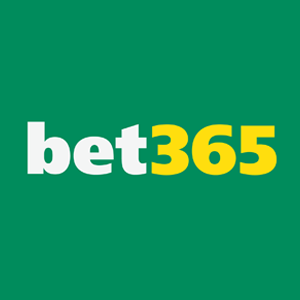Forecast Bet Explained - Types, How to Work Out & Practical Examples
Forecast bets offer an enticing challenge in sports betting, promising higher returns and an adrenaline-fueled experience. This article delves deep into the realm of forecast bets, exploring their types, calculation methods, and practical illustrations. Whether you're new to betting or looking to grasp the finer points of forecast bets, this guide aims to demystify their complexities, equipping you with the knowledge to navigate this thrilling aspect of sports wagering.
1. What is a Forecast Bet?
A forecast bet involves predicting the order in which participants will finish in a sporting event, typically in horse racing or greyhound racing. It requires naming the first and second-placed finishers in the exact order, and sometimes the third-placed finisher in a tricast bet.
Advantages:
- Higher Payouts: Forecast bets often offer higher payouts compared to standard bets due to the increased difficulty in predicting the exact finishing order.
- Excitement: It adds an extra layer of thrill and engagement to the race, making it more captivating for spectators.
Disadvantages:
- Higher Risk: The challenge of predicting the exact order increases the risk of losing the bet.
- Lower Chances of Winning: Due to the specific nature of the bet, the probability of winning is lower compared to simpler bets like win or place.
Suitable Audience and Timing:
Forecast bets are suitable for experienced bettors who have a good understanding of the sport and the participating contenders. They are ideal for individuals seeking higher payouts and are willing to take calculated risks. Timing-wise, forecast bets are more appropriate for races with a small field of highly competitive participants, increasing the odds of making accurate predictions.
2. Types of Forecast Bets
Forecast bets come in several formats, each with its nuances and strategies. Understanding these types offers a broader scope for betting enthusiasts.
2.1. Straight Forecast Bet
This is the most traditional forecast bet. It demands predicting the precise order of the first and second-place finishers in a race. The bettor must correctly guess both the winner and the runner-up in the exact sequence.
Example: In a horse race featuring contenders A, B, C, and D, the bettor places a straight forecast bet predicting A to finish first and B to finish second.
2.2. Reverse Forecast Bet
This variation introduces flexibility by allowing the selection of two horses to finish in the top two positions without specifying the order. The bet wins as long as the chosen horses occupy the first and second positions.
Example: The bettor selects horses A and B in a reverse forecast bet. As long as A and B finish as the top two regardless of their order (A first, B second, or B first, A second), the bet wins.
2.3. Combination Forecast Bet
This type broadens the betting horizon by permitting multiple combinations of horses to secure the first and second positions. It offers increased chances of winning but requires higher stakes due to multiple combinations.
Example: For horses A, B, and C in a race, the bettor places two separate bets - one predicting A to win and B to place, and another predicting B to win and A to place.
2.4. Tricast Bet
The tricast bet expands beyond the first and second-place predictions, encompassing the third-place as well. Here, the bettor forecasts the exact order of the first three finishers in a race.
Example: In a horse race, the bettor correctly predicts A to finish first, B to finish second, and C to finish third, in that precise order.
Each type of forecast bet offers varying levels of risk and reward, catering to different betting preferences and strategies. Straight forecast bets provide higher rewards but are more challenging, while reverse forecast bets offer more flexibility at the expense of slightly lower payouts.
Combination and tricast bets broaden the spectrum further, allowing multiple combinations and adding the third-place prediction, respectively, but also requiring higher stakes and precision.
3. How to Work Out a Forecast Bet
Working out a forecast bet involves calculating potential winnings based on the chosen selections and their respective odds. The process varies slightly depending on the type of forecast bet placed.
1 - Straight Forecast Bet
For a straight forecast bet, the stake is placed on predicting the exact finishing order of the first and second-place contenders.
| Stake x (1st Selection Odds) x (2nd Selection Odds). |
Example: If you bet $10 on Horse A at odds of 5/1 and Horse B at odds of 7/1, the potential winnings would be: $10 x 5 x 7 = $350.
2 - Reverse Forecast Bet
A reverse forecast bet allows flexibility in predicting two selections to finish in the top two positions without specifying the order.
| 2 x Stake x (Odds of Selection A + Odds of Selection B). |
Example: If you place a $10 reverse forecast on Horse A at odds of 5/1 and Horse B at odds of 7/1, the potential winnings would be: 2 x $10 x (5 + 7) = $240.
3 - Combination Forecast Bet
n a combination forecast bet, where multiple combinations are placed, the total stake is distributed across all the combinations made.
| Stake x (1st Selection Odds) x (2nd Selection Odds) |
Example: Suppose you place two combination forecast bets on Horses A, B, and C. The stake for each combination is $5, and the odds for each combination are different. The total potential winnings would be the sum of the potential winnings for each combination.
4 - Tricast Bet
A tricast bet involves predicting the exact order of the first, second, and third-place finishers. The calculation method is similar to a straight forecast but involves three selections.
| Stake x (1st Selection Odds) x (2nd Selection Odds) x (3rd Selection Odds) |
Example: If you bet $5 on Horse A at odds of 5/1, Horse B at odds of 7/1, and Horse C at odds of 10/1, the potential winnings would be: $5 x 5 x 7 x 10 = $1,750.
Understanding these calculations helps bettors estimate potential returns based on their stakes and the odds provided by bookmakers. Online forecast bet calculators are also available, simplifying these computations and aiding in strategic betting decisions.
4. How to Place a Forecast Bet on Horse Racing?
To place a forecast bet on horse racing, most top betting platforms follow a similar process. Here's a step-by-step guide:
- Navigate to the Forecast Tab: Access the racecard and find the forecast tab among the market options available at the top.
- Select Your Horses: Choose the horses you believe will secure the first and second positions in the race.
- Add to Betslip: Ensure the forecast bet is added to your bet slip. Some platforms might add it automatically once you've made your selections.
- Set Your Stake: Decide on the amount you want to stake on the forecast bet.
- Place Your Bet: Finalize the process by confirming the forecast bet on your bet slip.
It's important to note that while most betting sites, like bet365, Ladbrokes, and Paddy Power, follow this method, there are variations.
For instance, bookmakers like Betvictor and William Hill may require you to first select your two horses and then choose the forecast option during the betslip stage. The fundamental process remains the same, but the sequence of steps might differ slightly across platforms.
Forecast bets add excitement and higher payouts to sports betting, but they come with increased risk due to the specificity of predictions. Understanding the different types of forecast bets, their calculations, and placing them strategically can enhance the betting experience for seasoned enthusiasts looking for more challenging and rewarding opportunities.
Related bets you may be interested in:
|
Up-and-down bet |
Any to come bets |
|
Rounder bets |
Full cover bets |
|
Roundabout bets |
Handicap football betting |















.jpg)





